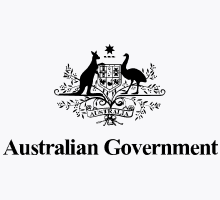Market Brief
The CIS Market Brief on 2025 WEM Tenders provides early guidance on the tender. It covers key design elements including the expected eligibility and merit criteria and indicative tender timeframes.
The Market Brief outlines the changes to some key design elements between this tender and previous tenders. It can help assist Proponents prepare ahead of the tender opening.
Information in the Market Brief may be subject to change. The final elements of CIS Tender 6 – WEM Dispatchable will be published in the Tender Guidelines and draft Dispatchable Capacity Investment Scheme Agreement (CISA) when the Tender opens.
About the Tender
Tender 6 is seeking an indicative target of 2400 MWh of dispatchable capacity in the WEM.
Projects must be located in Western Australia (WA) and connect or intend to connect to the South-West Interconnected System (SWIS).
Projects must have a minimum storage duration of 2 hours, a minimum registered capacity size of 30 MW.
Projects should demonstrate a credible pathway to achieving Commercial Operations Date (COD) prior to 31 December 2030. Bids with earlier target COD, supported by credible plans, will be assessed as higher merit.
Key dates
- Registrations and the Tender are expected to open late August 2025.
- Registration will close late September 2025.
- The Q&A process is expected to open when the tender launches and will close five business days before bid closing date, expected to be late October 2025.
New CIS Tender process
The Capacity Investment Scheme is introducing a suite of changes to its tender process designed to:
- increase efficiency and reduce tender duration to around 6 months
- deliver tender results earlier
- support Capacity Investment Scheme Agreement (CISA) signing without delays
Previous CIS tenders have involved a two-stage bid process. Tenders will now be conducted as a single stage process, aiming to reduce tender duration from 9 months to approximately 6 months. All tender information will be required by the bid closing date.
You can find more information on the new changes and how they impact future tenders on the DCCEEW’s website.
Webinar
We expect to host a webinar in early September to support potential Proponents’ understanding of the tender, the new tender process and product.
The Webinar will focus on changes from previous tenders for CIS Tender 6 and the tender process.
More information will be made available soon.
First Nations and Social Licence
The Australian Government has embedded strong social licence policy expectations in the CIS that begin with quality engagement with First Nations and regional communities.
This inclusion is to support positive social and economic outcomes from CIS supported projects.
New Labour Standard Reporting Requirements
From Tenders 5 and 6, successful recipients of a CISA will be required to publicly report on key labour and workforce arrangements, including those of their key subcontractors.
This change is intended to increase transparency on labour market practices and employment conditions provided by proponents who receive revenue underwriting support under the CIS from the Australian Government.
Renewable Energy Transformation Agreement allocations
The Australian Government has released a Market Brief on Renewable Energy Transformation Agreement allocations by jurisdiction.
The brief provides information on CIS capacity allocations by jurisdictions, agreed through RETA negotiations.
About AEMO and ASL's Role
AEMO and ASL have been engaged to support the roll-out of the Australian Government’s CIS as tender delivery partner, bringing together our expertise in energy markets, modelling and infrastructure finance and procurement. ASL is conducting the competitive tender process that will enable the Australian Government to determine which projects the scheme should support.
Our work will help the Australian Government secure reliability and security in energy supply for households and businesses across Australia. We will conduct the tender process, assessing overall project merit including social licence and financial value. The Australian Government Minister for Climate Change and Energy is the ultimate decision-maker, with a short-list of projects recommended to the Australian Government for final approval.
Registrations
will open soon
Last updated 7 Aug 2025

